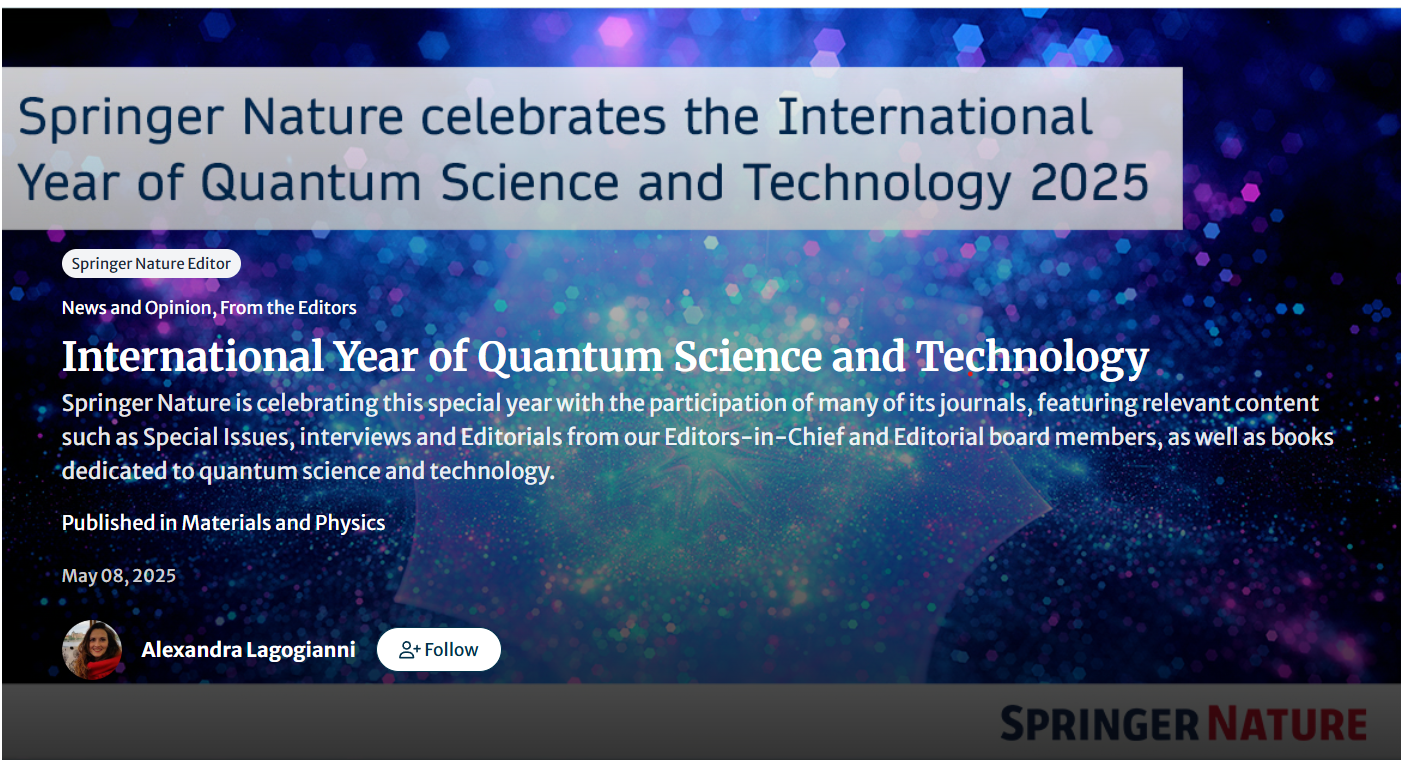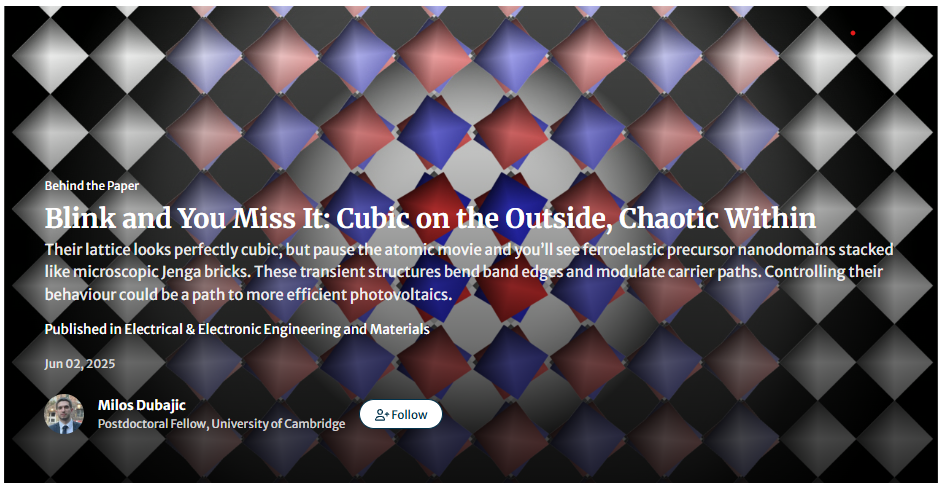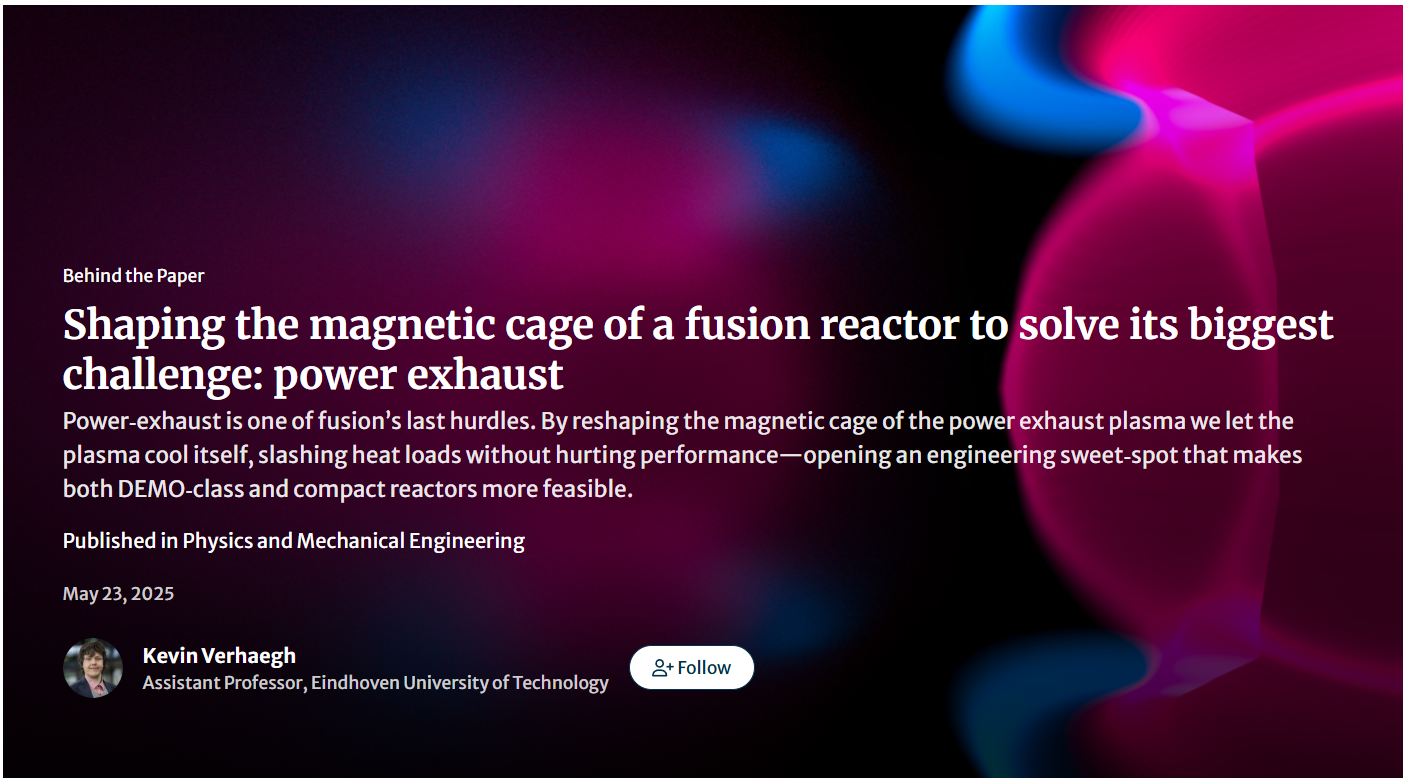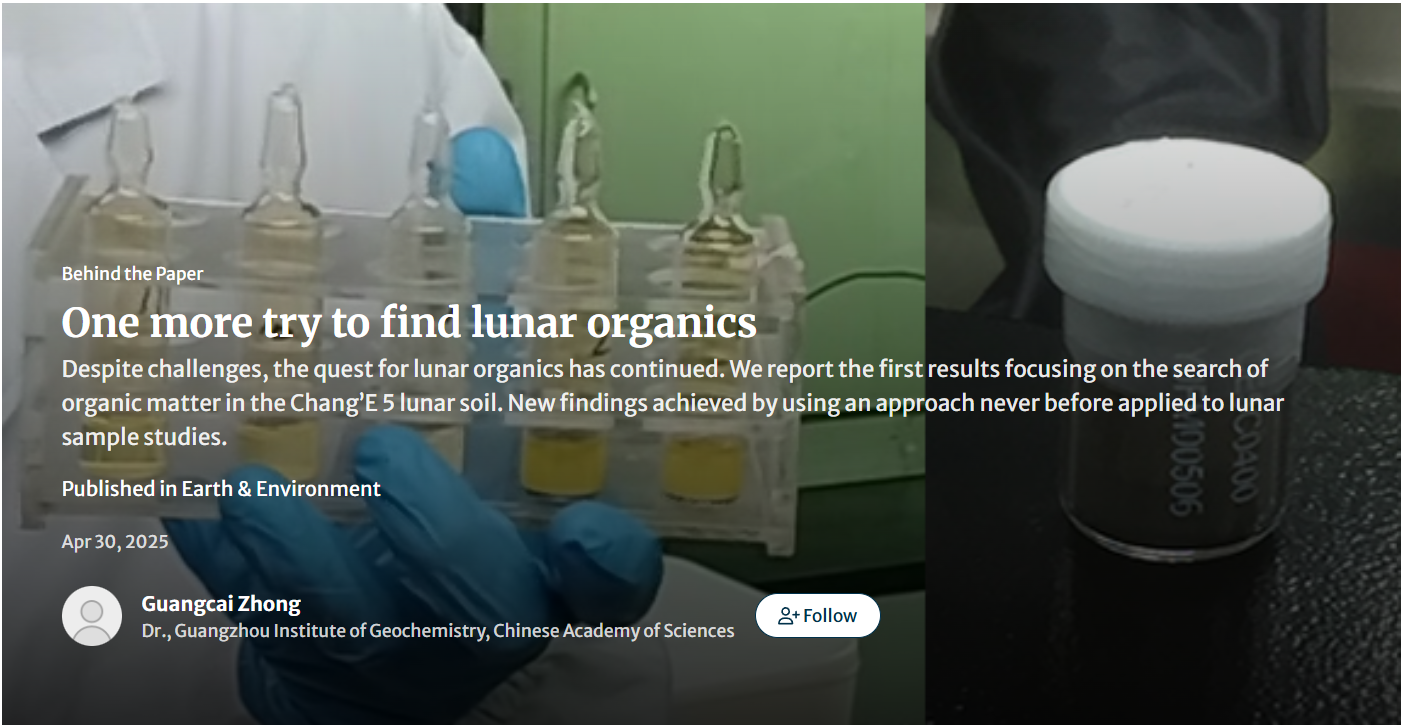Quarterly Highlights from the Mathematics, Physical and Applied Sciences Communities

As we wrap up another quarter, we’re back with a fresh set of highlights from the Mathematics, Physical and Applied Sciences Communities. From breakthroughs in quantum theory and fusion energy to new approaches in lunar science and microtechnology, here’s a roundup of standout posts that captured our attention.
The Year of Quantum Science and Technology
Quantum science is in the spotlight this year and the global community is coming together to celebrate its past, present, and future. @Alexandra Lagogianni outlines what’s planned for the International Year of Quantum Science and Technology, from educational programs to international collaborations.
Chaos in a Cube: When Symmetry Masks Complexity
A perfect cube may seem like a symbol of order but inside, the story can be very different. @Milos Dubajic shares new insights into 3D reaction-diffusion patterns that defy visual expectations. Published in Nature Nanotechnology, the work challenges our visual expectations and demonstrates how numerical simulations can uncover hidden behaviours in seemingly simple systems. This Behind the Paper post reveals how a seemingly regular shape can give rise to wildly complex dynamics just beneath the surface.
Graphene Meets Silicon: Supercharging Micro Devices
What happens when you combine the mechanical flexibility and conductivity of graphene with the precision of silicon-based micro- and nano-electromechanical systems? By bringing graphene into the design of silicon micro and nano devices, @Fan Yang and team have unlocked a new level of tunability and performance. Their approach could help advance technologies in communications, health, and robotics. Find out more in this Behind the Paper post.
Solving Fusion’s Heat Problem with Magnetic Geometry
Sustainable fusion energy promises clean, limitless power, but managing the extreme heat inside a fusion reactor remains one of its most critical engineering challenges. In this Behind the Paper post, @Kevin Verhaeghshares how a refined magnetic field design published in Communications Physics could help control power exhaustion more effectively, bringing us closer to making fusion energy a reality. By shaping the magnetic field lines more precisely, the team proposes a practical path forward for diverting heat away from reactor walls, reducing damage, and boosting energy efficiency. Learn more about the science and inspiration behind this work!
Still Searching: A New Attempt to Find Lunar Organics
Could the Moon hold traces of organic compounds? In a Behind the Paper post based on a study published in Nature Communications , @Guangcai Zhong recounts a new effort to detect lunar organics from regolith samples. While the results remain inconclusive, the study offers valuable insight into the methods and challenges behind this long-standing scientific question and why it’s still worth asking.
Looking for more? Check out the monthly round-ups and quarterly highlights from other disciplines:
We have also just launched a dedicated space for early career researchers – the ECR Hub .🎉If you are an early career researcher looking for support, advice, to expand your network and learn about others’ experiences in research, visit the Hub and make sure to follow it to stay in the loop!
We hope you enjoyed this snapshot of the exciting research and innovations happening across our Mathematics, Physical and Applied Sciences Communities. Whether you’re inspired by these stories or working on your own breakthroughs, remember that the Research Communities are here to support and amplify your voice. Don’t hesitate to share your work, join the conversation, and connect with fellow researchers. Here’s to another quarter of discovery and collaboration. Stay curious and keep exploring!
Follow the Topic
-
Nature Communications

An open access, multidisciplinary journal dedicated to publishing high-quality research in all areas of the biological, health, physical, chemical and Earth sciences.
-
Nature Nanotechnology

An interdisciplinary journal that publishes papers of the highest quality and significance in all areas of nanoscience and nanotechnology.
-
Communications Physics

An open access journal from Nature Portfolio publishing high-quality research, reviews and commentary in all areas of the physical sciences.
-
Microsystems & Nanoengineering

This journal, with a target for a high-end journal for years to come, seeks to promote research on all aspects of microsystems and nanoengineering from fundamental to applied research.
Ask the Editor – Space Physics, Quantum Physics, Atomic, Molecular and Chemical Physics
Got a question for the editor about Space Physics, Quantum Physics, Atomic, Molecular and Chemical Physics? Ask it here!
Continue reading announcementRelated Collections
With Collections, you can get published faster and increase your visibility.
Clinical trials 2025
Publishing Model: Open Access
Deadline: Dec 31, 2025
Higher-order interaction networks 2024
Publishing Model: Open Access
Deadline: Feb 28, 2026










Please sign in or register for FREE
If you are a registered user on Research Communities by Springer Nature, please sign in